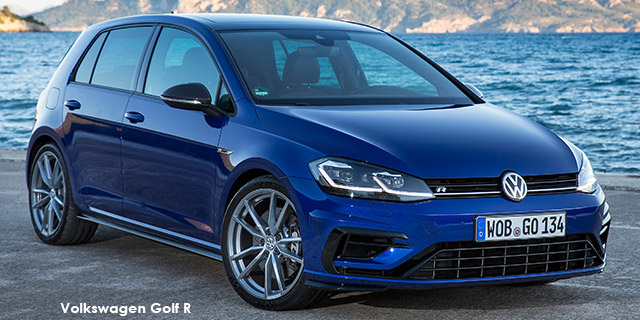You can now get the full-fat 228 kW Volkswagen Golf R. Is there merit in choosing it over the superb GTI?
When you think Volkswagen Golf, the first thing which generally comes to mind is “GTI” and not the flagship R. Despite the latter being the ultimate Golf, it’s never quite been able to match the reputation the GTI has set over its 45-year lifespan, likely because it’s never been as accessible as the latter and not as outrageous as its predecessor, the R32.
However, the R now boasts the fully fledged 228 kW and 400 N.m of torque as seen in its doppelgänger, the Audi S3 Sportback, which should give it some more credibility on the streets considering it’s a full 59 kW more powerful than the GTI.
This was a necessary change to elevate the R’s standing but the fact it’s being made available to us only now is a bit strange considering the Audi S3 gained this state of tune when the A3 range was facelifted in 2017. It’s almost as if Volkswagen didn’t want to upstage Audi by giving its derivative the same performance figures, despite claiming our fuel quality wasn’t up to scratch to accommodate the 228 kW output locally. We were even more confused when the Golf range got its facelift and the R not only came with the 213 kW state of tune, but also cost more than the S3. The only way to justify the price difference was that the Golf R arrived with more standard kit; just like the model we’re testing here. As before, features such as VW’s Active Info Display are standard on the R, but that of course hikes the asking price. As it stands, it’s a whopping R110 700 pricier than the GTI and R5 500 more than the S3.
Getting back to pricing in a bit, let’s first look at what’s new on the R. The most obvious place to start is the optional Akrapovic titanium exhaust system upgrade, if you can stomach the R39 900 price. The fat pipes look great but, while louder, a drone at cruising speeds slightly dents the Golf’s otherwise superb refinement. We did, however, enjoy the pops and crackles in race mode when shifting gears in the higher reaches of the rev range. Likewise, features such as adaptive chassis control (R13 200) and R Performance brakes (R9 900) are nice to have but hardly essential, the MQB chassis’ stability is fantastic and the standard brakes more than powerful enough.
You would expect, with a 15 kW and 20 N.m increase over the outgoing R, the new model would be notably quicker on our test strip. At just 0,05 seconds brisker to 100 km/h, the difference is marginal, although an acceleration time of 4,93 seconds is still ferociously quick. In-gear acceleration is stronger but the improvement over the old car is small. The 100-0 km/h average braking time was almost the same with an average time of 2,84 seconds; 0,03 seconds slower than before. It’s worth noting this test unit sat on Continental ContiSport Contact 6s while our previous test unit boasted a set of Pirelli P-Zeros.
The claimed fuel economy has also taken a bit of a knock with this increase in power: CAR’s fuel index (based on the manufacturer’s official figure) places it 0,36 L/100 km heavier than before. It was, therefore, a surprise when the new model used a whole 0,8 L/100 km less on our standardised fuel route.
So, without a significant increase in performance, do our reservations about choosing the R over the GTI and S3 remain? Yes. While the flagship Golf R offers a satisfying drive with sharp dynamics, a responsive engine-transmission combination and well-damped ride – even without the adaptive chassis – it doesn’t feel quite special enough to justify the additional cost over its VW stablemate. We might even argue the GTI is the better to drive thanks to its lighter mass. Of course, the R makes sense in colder climates where rain and snow see the 4Motion all-wheel-drive system come into its own to maintain limpet-like grip.
TEST SUMMARY
Based on our performance data, the extra 15 kW doesn’t add enough to the Golf R package to change its standing. While this apex hot hatch remains a great vehicle to drive, there are better options in the market. Thankfully for the VW Group, those alternatives sit within its own stable. Save yourself R110 000 and get the GTI, or walk across the road to an Audi dealership and test drive the S3 Sportback.
ROAD TEST SCORE

|

|

|

|

|
Original article from Car











